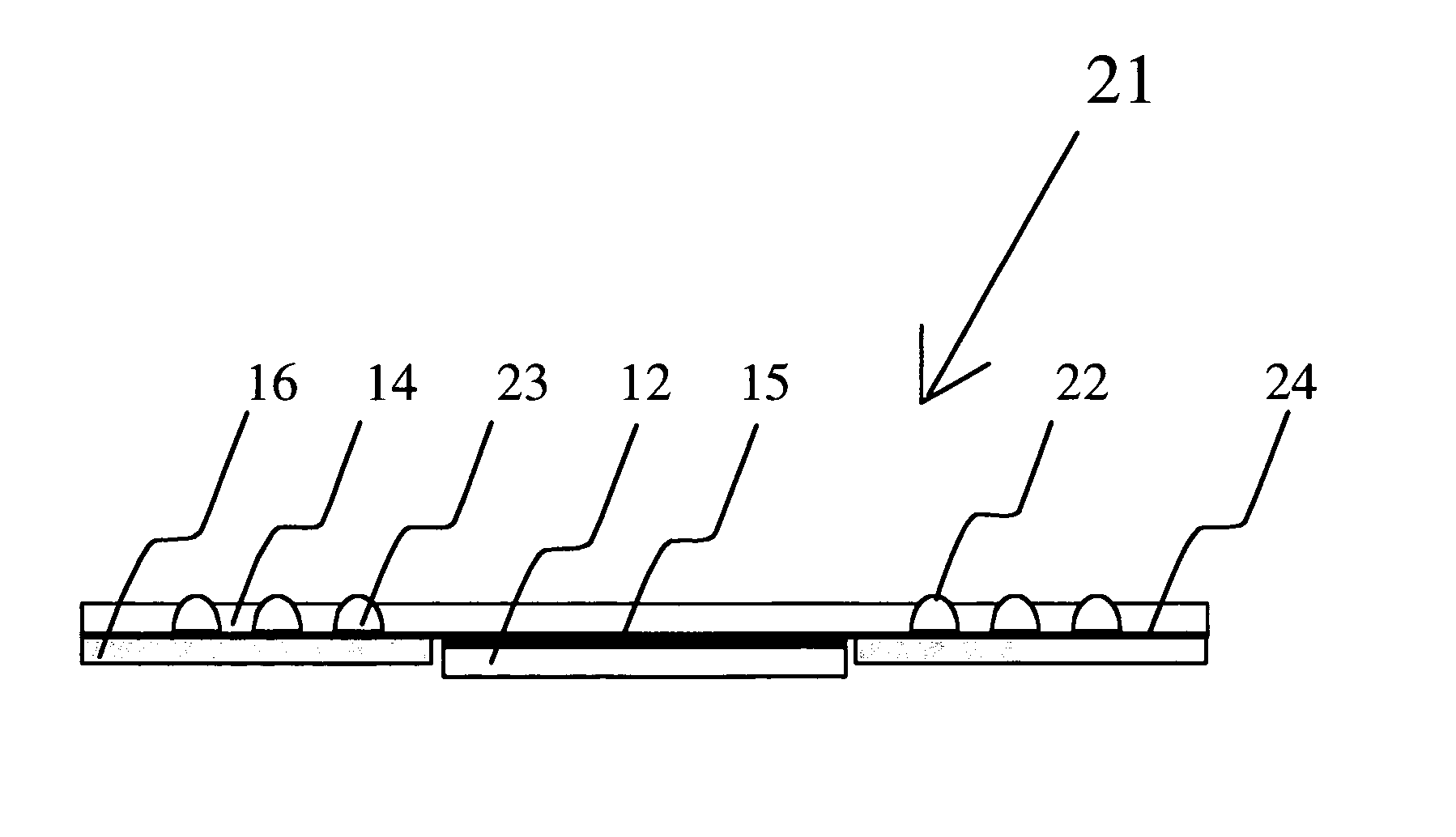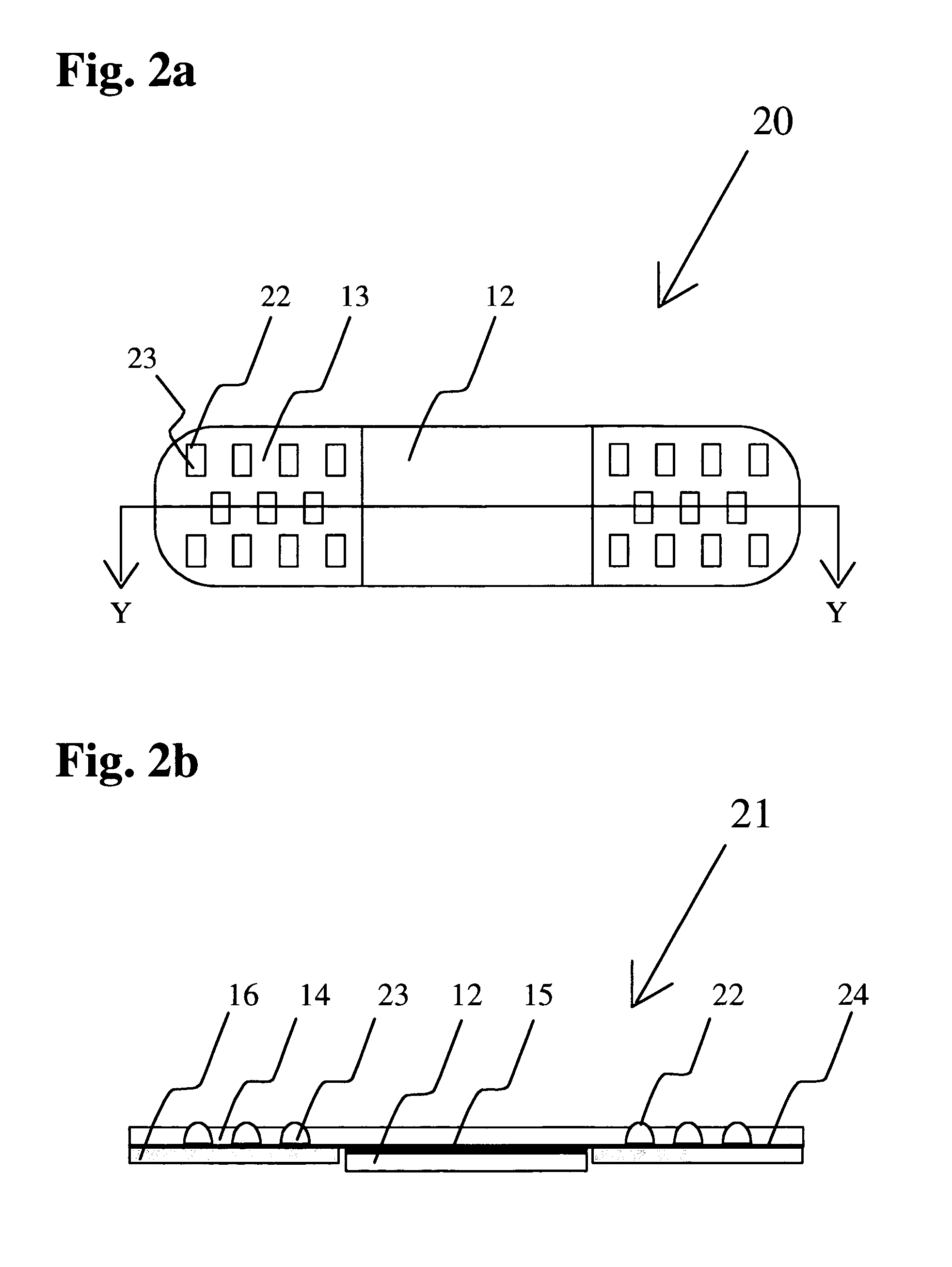Easy-to-peel securely attaching bandage
a bandage and secure technology, applied in the field of bandages, can solve the problems of pocket or microcapsule breaking, painless bandage removal, etc., and achieve the effect of easy removal upon demand and no pain
- Summary
- Abstract
- Description
- Claims
- Application Information
AI Technical Summary
Benefits of technology
Problems solved by technology
Method used
Image
Examples
first embodiment
[0042]the invention uses pockets that encapsulate the adhesive inactivating ingredient in the backing layer of the bandage. This is conveniently accomplished by preparing the backing layer as a two polymeric sheet construction, wherein the first polymeric sheet is embossed to create pockets. These embossing shapes may be spherical, cylindrical or elongated and may be individually separated or interconnected. The pockets are filled with an adhesive inactivating ingredient. A second polymeric sheet, which is generally thinner and has low strength properties, is spread over the first polymeric sheet, covering the pockets. It is then heat sealed or sealed by other methods to encapsulate the adhesive inactivating ingredient. This backing layer is processed in the usual way by attaching the absorbent pad using hot melt glue and applying the skin contacting adhesive to the end portions of the bandage. When pressure is applied to the outer surface of the backing layer, or the backing layer ...
second embodiment
[0043]The second embodiment uses a standard backing layer commonly used to fabricate bandages. The absorbent pad is attached at a central location by hot melt glue. The adhesive that is applied to the skin contacting end portions of the backing layer includes microcapsules that contain the adhesive inactivating ingredient. The adhesive bonds to the skin effectively and the bandage is retained on the skin in the usual manner. When release the bandage is desired, the wearer applies pressure to the adhesive portion of the bandage, or scratches this region. The microcapsules rupture, releasing the adhesive inactivating ingredient at the skin-adhesive interface. With this release, there is effected a pain-free, effortless removal of the bandage.
[0044]When a pocket or microcapsule breaks, it releases the adhesive inactivating ingredient. How far the ingredient spreads is a function of the volume of ingredient contained in the pocket or microcapsule, and its viscosity and surface tension, ...
PUM
 Login to View More
Login to View More Abstract
Description
Claims
Application Information
 Login to View More
Login to View More - R&D
- Intellectual Property
- Life Sciences
- Materials
- Tech Scout
- Unparalleled Data Quality
- Higher Quality Content
- 60% Fewer Hallucinations
Browse by: Latest US Patents, China's latest patents, Technical Efficacy Thesaurus, Application Domain, Technology Topic, Popular Technical Reports.
© 2025 PatSnap. All rights reserved.Legal|Privacy policy|Modern Slavery Act Transparency Statement|Sitemap|About US| Contact US: help@patsnap.com



